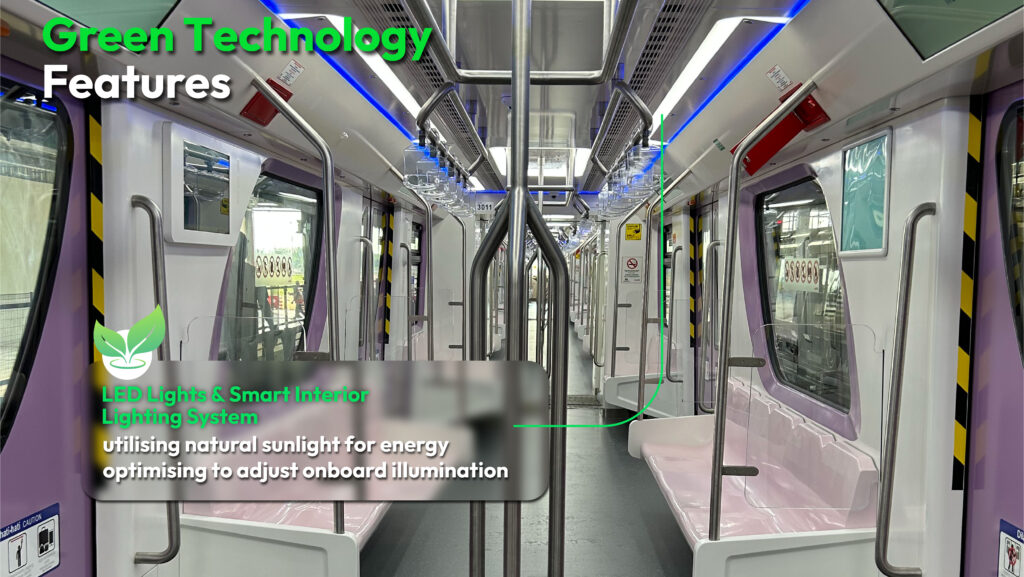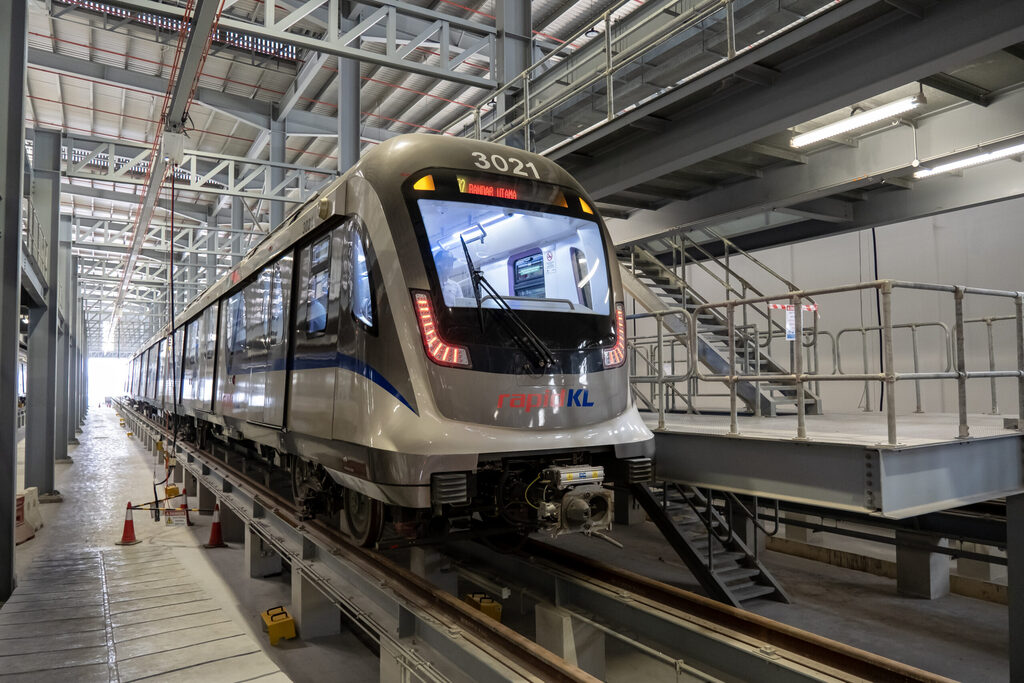KUALA LUMPUR – In an age where environmental sustainability is crucial, the railway sector is embracing a profound transformation towards eco-friendly alternatives.
Central to this paradigm shift is the evolution and integration of sustainable train systems. More than mere modes of transportation, these green trains epitomise a commitment to curbing carbon footprints, enhancing energy efficiency, and nurturing a cleaner, more sustainable future.
Unlike their traditional counterparts relying on diesel engines, green trains prioritise electrification and renewable energy sources.
The increasing prevalence of electric trains drawing power from overhead lines or a third rail exemplifies this shift.
Furthermore, some innovative systems incorporate solar panels along railway tracks, harnessing sunlight to power trains and advancing sustainability.
For example, the Light Rail Transit 3 (LRT3) project in the Klang Valley stands as a beacon of sustainable practices in the public transportation infrastructure sector. When completed, it will serve more than two million commuters.
On LRT 3, also known as the Shah Alam line, the Light Rail Vehicle (LRV) which was assembled in Batu Gajah, Perak, marked a significant milestone for the country as the LRV features a host of green features such as a smart air conditioning system that is ozone-friendly, coupled with a regenerative braking system converting braking effects into electrical energy.

The inverter air conditioner and smart air conditioning system installed on the LRVs operate with temperature sensors to yield energy efficiency, while the regenerative braking system takes excess DC voltage to be inverted to AC and re-injected into a 33kV network.
The inclusion of LED lights and a smart interior lighting system further enhance the sustainability of the LRVs. The LRVs’ operating speed of 80km/h also ensures commuters a swift and seamless journey to their intended destination along the Shah Alam line. On the other hand, LED lights and the smart interior lighting system utilises natural sunlight for energy optimisation to adjust onboard illumination.

Set to revolutionise commuting for a growingly environmentally conscious ridership, the line is expected to commence operations on March 1, 2025. While the second phase comprising of the five provisional stations, namely; Tropicana, Temasya, Raja Muda, Bukit Raja, and Bandar Botanik is expected to commence operations in Q2 2027.
Offering a more environmentally friendly option for commuters compared to carbon-emitting vehicles and congested roads, the line has the capacity to transport up to 18,630 passengers per hour per direction (PPHD). This is the equivalent of 3,726 fully occupied passenger vehicles.
According to travel site Save A Train, railway travel stands out as the most eco-friendly mode of transportation. The emission of greenhouse gases per kilometre in railway transport is a remarkable 80% lower than that of cars. In certain countries, trains contribute to less than 3% of the overall transportation-related carbon emissions.
Considering the efficiency of a typical train line, which is capable of accommodating tens of thousands of people per hour, this stands in stark contrast with a typical highway lane, which can only facilitate the movement of 2,500 people per hour.
With lower energy consumption and reduced reliance on fossil fuels, green trains can significantly reduce operating costs for railway operators. This, in turn, can lead to more affordable and accessible rail travel for passengers.
The economic benefits of green trains, such as reduced operating costs and lower energy bills, also serve as attractive options for railway companies looking to enhance financial sustainability.
Sustainable stations, facilities
In a recent parliamentary written response, Natural Resources, Environment and Climate Change Minister Nik Nazmi Nik Ahmad had said that by 2050, the government is expected to save RM97.1 billion or 2,017 million gigajoules (GJ) in energy consumption by enforcing the proposed Energy Efficiency and Conservation Bill.
If enforced, the bill – which aims to establish a comprehensive energy efficiency legislative framework to regulate, enforce, coordinate, and implement energy efficiency initiatives – will also reduce carbon emissions by 197,877 ktCO2, apart from creating 1,000 new job opportunities.
Various methods are employed to reduce greenhouse gas emissions, as outlined in Chapter 8 of the 12th Malaysia Plan (RMK-12), encompassing mitigation actions through programmes for the use of new energy sources, energy efficiency through the National Energy Efficiency Action Plan, and rail-based public transportation.

In this regard, the 25 LRT Shah Alam Line stations exemplify various green features, including LED lighting, autostart escalators with variable speed drive, and compound lighting with photocell and timer. Rainwater harvesting for restrooms and irrigation adds to the stations’ eco-friendly initiatives.
Accessibility features, such as tactile pavement for the blind, braille and voice-assisted lifts, ramps for persons with disabilities (OKU), and dedicated spaces for wheelchairs and seat belts inside the LRV, contribute to the overall inclusivity of the public transportation system.
The line’s Johan Setia Depot serves as a hub for sustainable initiatives, incorporating solar applications and extensively using LED lighting, further contributing to energy efficiency.
Based on 2020 figures released by the Swiss air monitoring company, IQAir.com, the Klang city area was among the most polluted in the region.
In mid-2021, Klang experienced “Moderate” air quality, with a US AQI (Air Quality Index) reading of 89, or PM2.5, which was over three times higher than the World Health Organisation’s recommended maximum exposure level.
Global recognition for environmental sustainability
The United Nations General Assembly, in its resolution in May this year, acknowledges the pivotal role of safe, affordable, accessible, and sustainable transport systems in supporting sustainable economic growth, improving social welfare, and enhancing international cooperation and trade.
In recognising the importance of cooperation, the resolution emphasises the need for integrated intermodal transport systems, quality infrastructure, and the exchange of best practices to optimise the development of interconnected transportation networks.
The project owner of the LRT Shah Alam Line, Prasarana Malaysia Bhd (Prasarana) gave its full mandate to its main turnkey contractor, Setia Utama LRT3 Sdn Bhd (SULRT3) to develop the 37-km railway comprising of two integrated stations (Bandar Utama and Glenmarie) which connects commuters to the MRT Sg Buloh-Kajang line and LRT Kelana Jaya line.
A subsidiary of MRCB Builders, SULRT3’s commitment to sustainability is not just about creating a greener future. It’s about creating a future where everyone has access to safe, reliable, and affordable transportation.
In July 2020, SULRT3 made history by becoming the first infrastructure project to receive a 5-star rating for environmental sustainability.
Awarded by the Construction Industry Development Board (CIDB) Malaysia, this Sustainable INFRASTAR certification for the design phase of the LRT3 project underscored the company’s dedication to environmental sustainability.
The Sustainable INFRASTAR rating system evaluates key sustainability factors, including land use, equipment impact, and resource and waste management, aligning with the Construction Industry Transformation Plan 2016-2020 (CITP).
With a forward-thinking approach and innovative solutions, SULRT3 continues to set the standard for sustainable transportation infrastructure. – December 15, 2023

